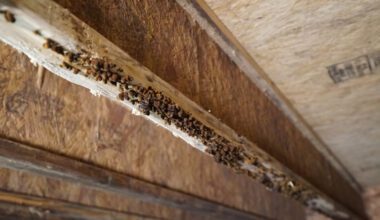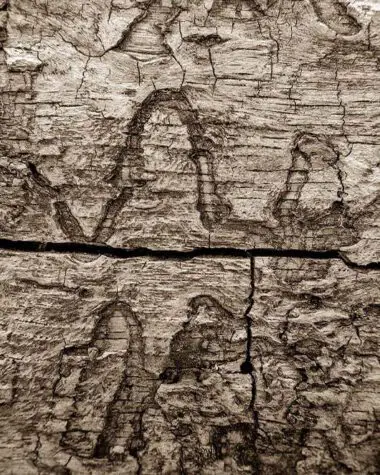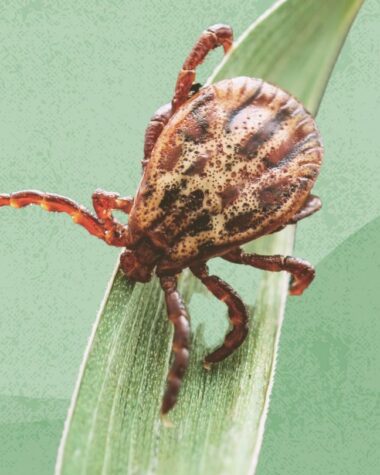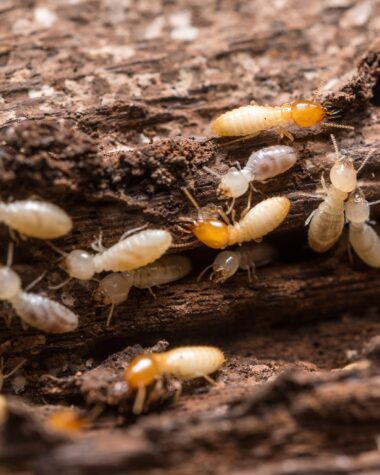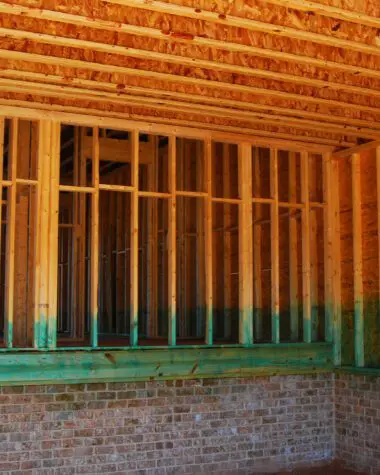Cellulose is the main building block of plants and trees, and they are the favorite food of termites and other wood insects. Wood is rich in cellulose and other fibers, which are vital for termites to survive. Aside from that, wood is an ideal place to establish their colonies and increase their population.
Termites have special bacteria in their gut that helps them break down cellulose fiber into a nutritious meal. They can consume a massive amount of cellulose daily, leading to detrimental wood damage. Termite infestation in homes is hard to spot; that’s why most infestations are severe.
Why Do Termites Eat Wood?
Wood is rich in natural and nutritious fiber, known as cellulose, a favorite termite choice. Cellulose for termites is not just food; it is their vitamin, energy booster, and lifesaver. Their survival depends on it, and without it, they’re doomed.
Additionally, wood is a perfect place to build their nest. Most wood is sturdy and connected to the ground; thus, it is easier for termites to travel to different areas and find more food sources. In The natural world, termites are important in decaying woods to make the soil fertile. But, in a house, termites are pests causing serious structural damage.
List of Woods Termites Eat
Termites are cellulose-loving insects. They will infest any wood or material that has cellulose. But, most termites have a specific wood to invade. Here are the most common types of wood they are likely to eat.
Untreated Softwoods
Softwoods like fir and cypress are ideal snacks for termites if untreated. This type of wood has a soft exterior making it easier for termites to penetrate and eat all the available cellulose. Also, this wood is commonly used in building a house, so if left untreated, it can cause a serious problem for homeowners.
Untreated Hardwoods
Hardwoods may sound impenetrable, but ironically, termites are unstoppable in conquering even the hardest of wood. Oak, hickory, maple, pecan, and other trees that lose leaves every fall are viable termite choices. When untreated, termites can cause structural damage and destruction.
Pinewood
Pine wood is number one on the termite’s menu. Every part of the pine tree is jam-packed with cellulose, from roots and barks up to its high branches. Pinewoods is inexpensive, which makes it an ideal choice for building a house. Make sure to treat it with a wood preservative before using it.
Spruce Wood
Just like Pinewood, Spruce is an ideal choice among termites. It is rich in cellulose and one of the common construction materials in building a home. Though it’s more durable than pine wood during the wet season, termites will never miss the chance to attack spruce to feed.
Plywood
Plywood is everywhere. It is present in every house and building. Termites can easily devour their exterior and interior to consume all available cellulose. Plywood is prone to termite attacks, so make sure that your plywood is chemically treated to avoid damage.
Woods with Natural Resistance to Termites
Fortunately, there is wood that has a natural resistance against termites. These woods are a perfect choice for building a house and other structures. Here is the list of woods that have natural barriers against termites.
Cedar
Termites are less attracted to cedar because it contains allelochemicals acting as a natural insect repellent. These added layers of protection and durability make cedar an appealing choice for building materials. To ensure total resistance, treat it with wood sealant or preservative.
Redwood
Termite hates redwood due to the tannic acid present in redwood barks. It does not have enough sap, unlike other softwood trees. Redwood is composed of natural compounds which make it durable against termites, decay, and fire.
Teak wood
Termites are not interested in teak wood. Like others, it has a natural compound that allows it to resist termites. Teak wood is also durable and weather-resistant, making it a pricy building material choice.
Cork Wood
Cork wood is also unappealing to termites. It naturally repels termites and other wood-destroying insects. Plus, it can also prevent the growth of mold, fungi, and mildew. Cork wood is ideal for building structures and furniture.
Pressure treated wood
Pressure-treated wood is produced by embedding chemical preservatives into the wood’s pores. Alkaline copper quaternary and copper azole are two common wood preservatives used to repel termites. It has long-lasting effectiveness and is a popular choice by builders and homeowners.
Composite Lumber
This artificially produced lumber has chemical elements that termites cannot eat. Plastic is one of the main components of composite lumber. It can resist decay, insect infestation, and harsh weather conditions. Thus, making it a popular choice to build a long-lasting structure.
How to Prevent Termite Infestation
Using the natural-repellent wood listed above does not guarantee a 100 percent immunity against termites and other damaging insects. It is important to take precautions to lessen termite infiltration. You can minimize the risk by fixing leaking roofs and drainages to avoid moisture build-up, which attracts termites.
It is advisable to have a property pests inspection once you notice a sign of termite infestation. Additionally, they can conduct a full inspection around your property and remove any discarded log that can be a potential termite colony. It can be expensive, but prevention is better than cure.
There are wood sealants and preservatives that you can purchase in your local hardware. Seal your wooden structure with chemically approved solutions to prevent termites. Also, you can use natural treatment to eliminate termites.
Conclusion
Termites are always looking for anything with cellulose, and wood is their top target. They will devour it like an eat-all-you-can buffet when they find one. They will only stop once they consume all the nutrients and will transfer to another prospect wood.
If you’re buying furniture, look for treated wood and avoid wood that is susceptible to termites. If you already have a wooden structure that is prone to termites, then you must seek the help of a professional termite exterminator to lessen infestation. Plus, damaged wood can still be reused by creating new furniture.


